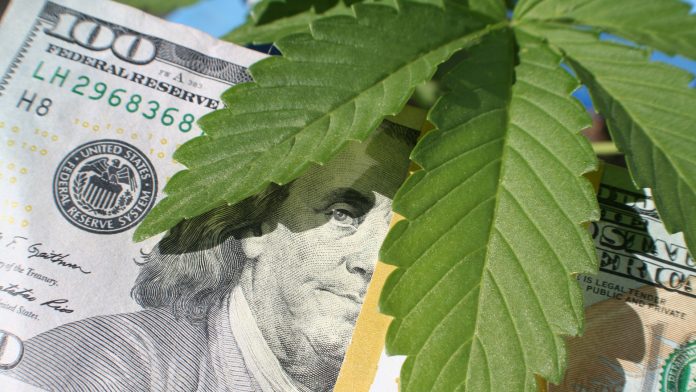
As the National Cannabis Industry Association celebrates its 10th anniversary, CEO Aaron Smith tells MCN about the evolution of cannabis in the US.
Aaron Smith is the CEO and co-founder of the National Cannabis Industry Association (NCIA), the USA’s largest trade organisation for legal cannabis businesses. The NCIA was founded in 2010 with the goals of advocating for policy reform, providing educational resources and acting as a voice for the burgeoning legal cannabis sector in the US.
Smith tells MCN about the evolution of the association, its current policy priorities, and the impact of the COVID-19 pandemic on the industry.
The NCIA celebrates its 10th anniversary in 2020. How has the cannabis industry evolved since 2010? How do you see the industry developing in the next 10 years?
The changes we have seen in the cannabis industry in the last decade have been momentous. In 2010, there were only a handful of states with medical cannabis laws, many of which did not explicitly allow legal commercial production and distribution. Violent raids by federal, state, and local law enforcement were fairly common, though the 2009 Ogden Memo had started to decrease federal involvement in enforcement against businesses in compliance with state laws. No state had yet passed an adult use law. Public support for legalisation was just over 50%.
The evolution that has taken place since then can be witnessed through the history of NCIA itself. Almost every state now allows cannabis in some form; a majority have effective medical cannabis law; and eleven states and several territories have made cannabis use legal for adults. Two thirds of Americans support legalisation and this sentiment is growing in nearly every demographic imaginable. Support for allowing medical cannabis is almost universal. Department of Justice policy is to not enforce federal prohibition against state-legal businesses. The international cannabis industry, which was nonexistent a decade ago, is flourishing.
We came into 2020 on the heels of the first ever passage of standalone cannabis policy reform in Congress, after the House of Representatives approved the SAFE Banking Act in September 2019. Regulated cannabis businesses went from being considered undesirable liabilities to essential pillars of healthcare, public safety, and economic stability during the pandemic. And there is now serious discussion in Congress about how to make cannabis federally legal in a way that helps undo the harms caused by prohibition. In short, this is an entirely different world for cannabis than it was 10 years ago – and even more momentous changes are on the horizon.
How should banking and finance legislation in the US evolve to account for the needs of the cannabis industry?
The SAFE Banking Act, as passed by the House of Representatives in 2019, represents the most necessary changes to federal banking and financial services policy in the absence of measures implementing federal legality and descheduling. Financial institutions need to know that they will not be punished for working with cannabis businesses, nor will they be forced to file labour intensive and unnecessary reports for every transaction. While it appears that some larger and more risk-averse banks may still have qualms before cannabis is fully legal, many more would be willing to work with – and crucially, provide capital to – the cannabis industry if this legislation becomes law.
Thankfully, the House recently passed a pandemic relief bill known as the HEROES Act, which contains the language of the SAFE Banking Act: this will put this issue in front of the Senate in a more immediate fashion than the standalone legislation which it has been considering over the last year and which has been delayed because of COVID-19.
What has been the impact of including the Drug Enforcement Administration (DEA) in the process of determining research approval for cannabis? How might cannabis research in the US benefit from excluding the DEA from the approvals process?
The DEA has been – and continues to be – the biggest impediment to research and the production of research material. Making a federal health and science agency the gatekeeper for cannabis research would go a long way towards aligning the needs of the process with the expertise of the organisation that controls it. It would also allow research and production approval to focus on factors other than potential diversion, a concern that holds less and less weight as more states make cannabis legally accessible.
What has been the impact of the COVID-19 crisis on the cannabis industry?
The impact of the pandemic has probably been harder on the cannabis industry than many others, but there have been some silver linings. Being declared ‘essential’ in most states has allowed these businesses to continue operating, providing continuous healthcare while protecting jobs and generating much-needed tax revenue.
The recognition of their value has increased momentum for legal and regulatory reform at the local, state and federal levels.
Unfortunately, the cannabis industry faces onerous financial burdens in the best of times; and it has had to deal with even more straining factors during the pandemic to keep employees and customers safe, not to mention grappling with interruptions in the supply chain. Without lack of access to federal relief funds or banking services, I fear it will take much longer for the industry to fully recover and get back on a growth trajectory, and many smaller businesses will be forced to close. In the long run, though, it may help us push federal reform forward more quickly once Congress gets back to somewhat normal operation.
Aaron Smith
CEO
National Cannabis Industry Association
https://thecannabisindustry.org
This article is for issue 3 of Medical Cannabis Network. Click here to get your free subscription today.


















